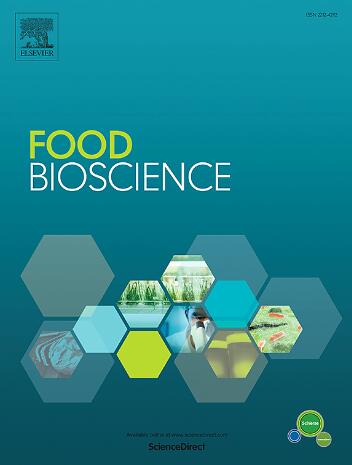CRISPR-Cas9 mediated construction of a food-grade pyrroloquinoline quinone high-yielding Acetobacter pasteurianus Ab3 strain
IF 4.8
1区 农林科学
Q1 FOOD SCIENCE & TECHNOLOGY
引用次数: 0
Abstract
Pyrroloquinoline quinone (PQQ) is believed to be a new B vitamin compound, and dietary PQQ has received more attention as a potential treatment for diseases including inflammatory injury and obesity. It widely exists in foods related to acetic acid bacteria fermentation like fermented vinegars. To obtain a food-grade PQQ high-yielding strain, clustered regularly interspaced short palindromic repeats (CRISPR)/CRISPR-associated proteins (CRISPR/Cas)-based genome editing system was applied to genetically manipulate Acetobacter pasteurianus Ab3 for utilizing in industrial vinegar fermentation. Its PQQ biosynthetic genes were first characterized with conserved pqqA gene and pqqBCDE operon, and tldD gene instead of pqqF/G. Besides, our results revealed that pqqBCDE but not pqqA was the major limiting factor of improving PQQ production. Furthermore, endogenous promoters were screened from transcriptome data and evaluated their strength of improving PQQ production. The promoter P2690 showed the best efficiency and was selected to overexpress pqqBCDE operon. The engineered strain A. pasteurianus Ab3:P2690 produced 12.74 μg/mL of PQQ, which was 9.1-fold higher than that of WT strain. The potential of PQQ production of the engineering strain A. pasteurianus Ab3:P2690 was further investigated by the semi-continuous fermentation in a 3 L fermentation tank. After 240 h of fermentation, the concentration of PQQ reached 41.96 μg/mL. To our knowledge, this is the greatest PQQ yield reported so far using A. pasteurianus as a host strain. This study provides a practical approach to construct PQQ high-yielding A. pasteurianus strain that can be used in food industry and enhanced the health-promoting properties of vinegars.

CRISPR-Cas9介导的食品级吡咯喹啉醌类高产巴氏醋酸杆菌Ab3菌株的构建
吡咯喹啉醌(PQQ)被认为是一种新的B族维生素化合物,膳食PQQ作为一种潜在的治疗炎症性损伤和肥胖等疾病的方法受到越来越多的关注。它广泛存在于发酵醋等与醋酸菌发酵有关的食品中。为了获得一株食品级PQQ高产菌株,采用聚类规则间隔短回文段重复(CRISPR)/CRISPR相关蛋白(CRISPR/Cas)基因组编辑系统对巴氏醋酸杆菌Ab3进行遗传操作,用于工业食醋发酵。其PQQ生物合成基因首次被鉴定为保守的pqqA基因和pqqBCDE操纵子,以及tldD基因代替pqqF/G。此外,我们的结果表明,pqqBCDE是提高PQQ产量的主要限制因素,而不是pqqA。此外,从转录组数据中筛选内源启动子,并评估其促进PQQ产生的强度。启动子P2690效率最高,被选择过表达pqqBCDE操纵子。工程菌株Ab3:P2690的PQQ含量为12.74 μg/mL,是WT菌株的9.1倍。通过在3l发酵罐中半连续发酵,进一步研究了工程菌株巴氏杆菌Ab3:P2690生产PQQ的潜力。发酵240 h后,PQQ浓度达到41.96 μg/mL。据我们所知,这是迄今为止以巴氏杆菌为宿主菌株报道的最大PQQ产量。本研究为构建可用于食品工业和提高食醋保健性能的高产巴氏巴氏杆菌PQQ菌株提供了一条实用途径。
本文章由计算机程序翻译,如有差异,请以英文原文为准。
求助全文
约1分钟内获得全文
求助全文
来源期刊

Food Bioscience
Biochemistry, Genetics and Molecular Biology-Biochemistry
CiteScore
6.40
自引率
5.80%
发文量
671
审稿时长
27 days
期刊介绍:
Food Bioscience is a peer-reviewed journal that aims to provide a forum for recent developments in the field of bio-related food research. The journal focuses on both fundamental and applied research worldwide, with special attention to ethnic and cultural aspects of food bioresearch.
 求助内容:
求助内容: 应助结果提醒方式:
应助结果提醒方式:


